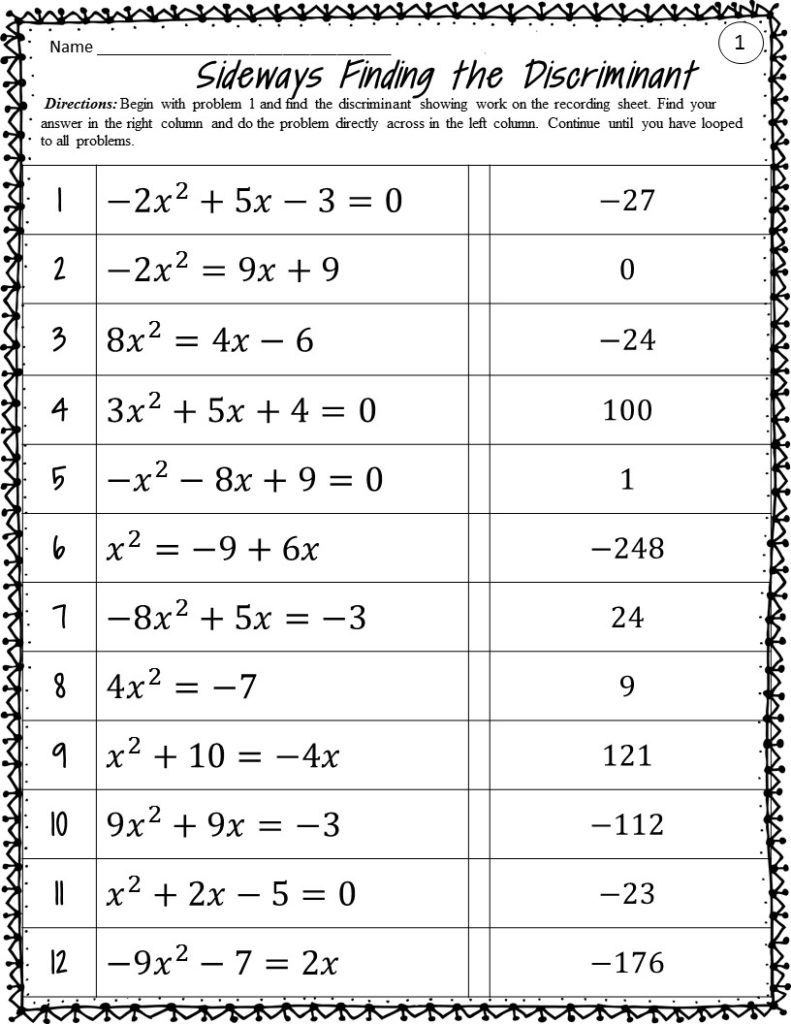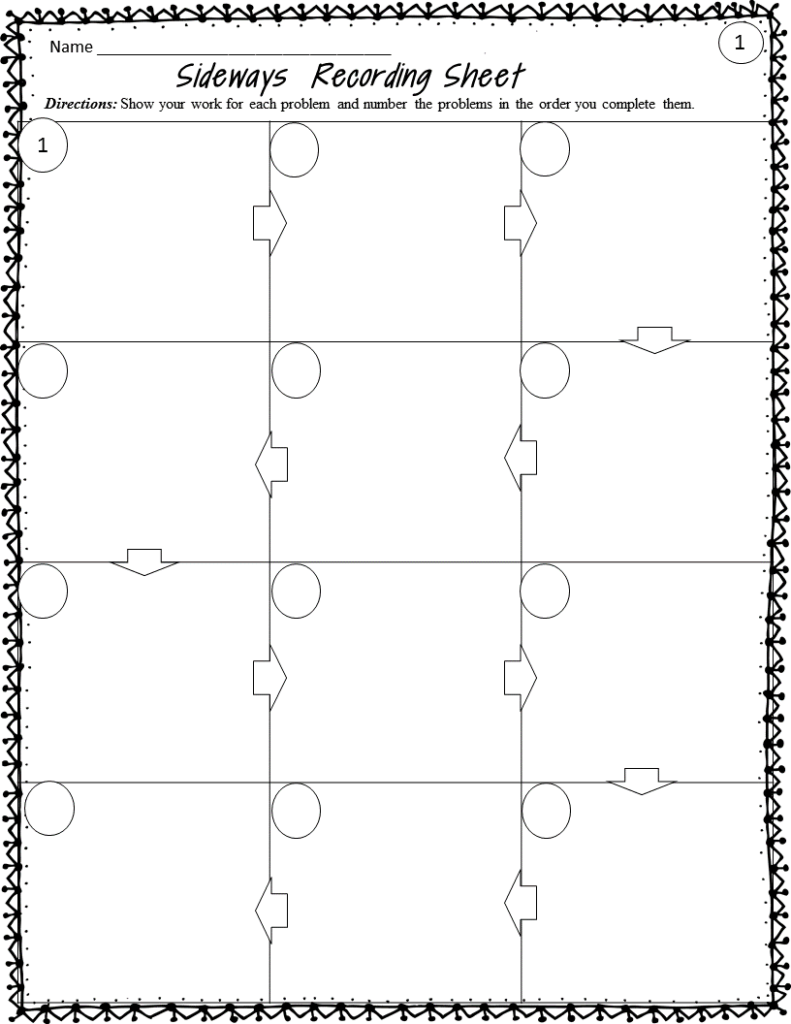I love scavenger hunts in the classroom, but one year I had a student who was not able to travel around the room. He needed an activity with all the benefits of a scavenger hunt, without the physical hunting.

Scavenger Hunts vs Sideways
The benefits of scavenger hunts is being able to talk to others while working, and having all the answers in front of you so it is self-checking. For teachers, It is an ordering activity without having to cut up all the pieces.

You begin with one problem, solve it and look for your answer somewhere else. And since we had to confine those answers to the same page, they had to look sideways. Thus, the Sideways activity was born.

How It Works
Students all begin with problem 1 and complete it. In the worksheet shown, the discriminant of that equation = 1, so the next problem the student needs to complete is the problem in the row next to 1. In this case, that is problem 5.
The answer to that equation is = 100, which is next to problem 5. The student completes problem 5 next and continues until all the problems have been completed and the answer to the final problem is next to problem 1.

Recording Work and Answers
Students keep track on a recording sheet. They all begin with problem 1 and after that, they enter the next problem number and keep going until all problems are complete.

Benefits
- It is easy for the teacher to check. The problems are completed in a certain order.
- It is easy for students, each answer appears only once and if they have used that answer before, they realize they made an error.
- It provides much needed practice and is perfect for a group activity.
- When I use in the classroom, each member of the group gets a unique version of the worksheet so while they can help each other, they cannot just copy.
- If you have only 3 in a group, that extra worksheet can be used for homework, absent students, tutoring or make up work (no, not extra credit, but that is up to the teacher).
- I use the teacher demo sheet to show the students how to solve, find the next problem and record on my recording sheet. I find when I introduce a new activity for students, they need to physically see me do it with them.
- The teachers demo and all 4 versions of the activity have the same three problems. Students get off to a good start on the activity.
- It is easy to differentiate for students, either do more or fewer problems. You can put struggling students in a group and do more problems.

Using Digitally
Note: I have used this with distance learning by putting the worksheet on a google slide and having the students complete by highlighting the answers while in a breakout room. They students still completed the recording sheet and then turned in the recording sheet in google classroom. And I did the lesson using the demo form working through the first 3 problems.
Was it successful? Yes, students got the practice and were able to complete it. They still had the opportunity to get help from others and get ideas and strategies.
Did I prefer it to using in the classroom? No, being in person where I can hear the conversations and intervene if needed is better. But, that has not been an option this past year.

I have several skill available in my TPT store, you can check them out here.
I also want you to see for yourself if this activity works for your students and you notice the engagement that I have in my own classroom. Here is a free version for readers with the teacher demo and 2 versions of the worksheet.










Leave a Reply